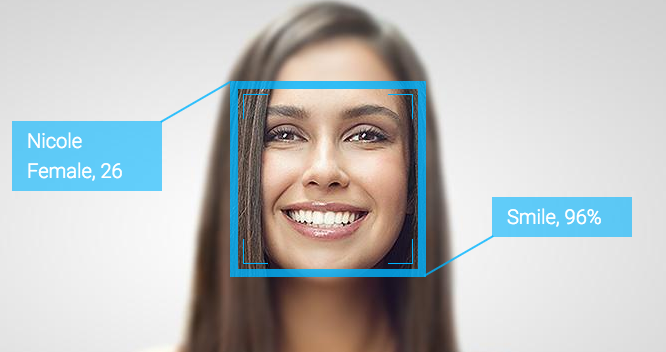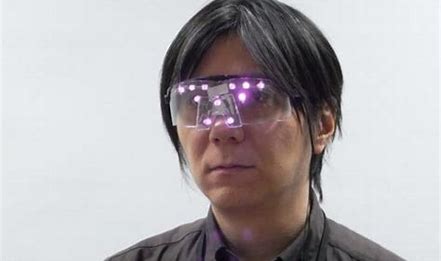The Surprising Global Forward March of Facial Recognition - Part 4

In Part 1, we introduced your face as the next computer cookie and discussed USA/UK retail applications.
In Part 2, we faced the reality that more FaceID disruptions is coming to the security industry, introduced healthcare applications, and concluded with GAFAM (Google, Apple, Facebook, Amazon, and Microsoft) investments.
In Part 3, we traveled to China, THE world's leading face recognition innovation laboratory.
In this Part 4, we look at the growing list of emerging FaceID applications, introduce defeating technologies, discuss privacy, and close the series with insights on our digitally connected future. The genie on the potential disruption and business opportunities of face recognition solutions is out of the global bottle.
The Face of an Increasingly Digital World
- More than one billion smartphones featuring facial recognition will ship by 2020. Apple and Samsung will lead the pack followed by multiple Chinese manufacturers. 64% of all smartphone shipments in 2020 will include facial recognition versus 5% in 2017.
- USA Army researchers have developed an artificial intelligence and machine learning technique that produces a visible face from a thermal image of a person's face captured in low-light or nighttime conditions. Hiding in the dark is not an option.
- Google was recently awarded a patent for 'Facial Recognition with Social Network Aiding'. The invention envisions incorporating
 "information from social networks — potentially including Facebook, Twitter, Gmail, online blogs, and more — to help identify who people are."
"information from social networks — potentially including Facebook, Twitter, Gmail, online blogs, and more — to help identify who people are." - Walmart has patented technology that would capture shoppers' facial expressions while in the checkout lines so that it could measure levels of dissatisfaction.
- In the UK, the Imperial College London is working on facial recognition methods to improve online teaching strategies. The University College is analyzing faces to detect differences between healthy people and Parkinson's patients.
- In France, Zodiac Aerotechnics has recently patented a camera able to detect whether a passenger is seated in his assigned seat on an airplane or train.
- In Canada, PiP has built a pet identification app. "When a pet goes missing, the application alerts veterinarians, rescue and animal control agencies, subscribers of the app and users of social networks to find it."
- Facial recognition research is now shifting towards sentiment analysis, recognition based on a person's gestures.

- NEC recently announced plans to use facial recognition to identify and authenticate over 300,000 athletes, volunteers, media personnel, and guests for 2020 Tokyo Olympics.
- The 2018 Buick Enspire concept automobile featured facial recognition capable of unlocking the vehicle as the owner approaches and automatically configuring the interior to suit his or her preferences.
- Online dating apps are moving to facial recognition algorithms which can easily filter out irrelevant profiles and find more tailored search results.
- Singapore is planning to install cameras with facial recognition on all 110,000 lamp posts around the city. The 'Lamppost-as-a-Platform' project will allow the government to “perform crowd analytics” and support anti-terror operations.
- Chinese authorities in Beijing and Shanghai have rolled out new Gait recognition technologies which can identify people just by their walking style and silhouette. An improvement on facial recognition, the software works 50 meters (164 feet) away and cannot be fooled by abnormal body motions.
To Hack or Not Hack Your Face
As with any new technology, once adoption increases, disruptors trying to defeat it are not that far behind.
- University of Toronto researchers recently announced new Artificial Intelligence (AI) technologies that can defeat facial recognition.
- "Experts at MIT and Kyushu University fooled an algorithm into labeling a picture of a 3D-printed turtle as a rifle by altering a single
 pixel."
pixel." - Researchers at Carnegie Mellon University demonstrated how specially designed spectacle frames can fool even state-of-the-art facial recognition software.
- In Russia, Grigory Bakunov invented a solution to escape the eyes permanently watching our movements and confuse face detection devices.
- A Vietnamese company used a mask to hack the FaceID recognition of Apple's iPhoneX. "However, the hack is too complicated to implement for large-scale exploitation."
Privacy is a Major Concern
A recent USA Brookings Institute survey found that 50% of participants are unfavorable to the use of facial recognition software in retail stores to prevent theft. Forty-four percent are unfavorable to using this software in airports to establish identity, 44% are unfavorable to it in stadiums as a way to protect people, and 38% are unfavorable to its use in schools to protect students.
We are at a critical time with face recognition technologies and government regulations are not keeping up with the pace of innovation. The President of Microsoft shares similar concerns.
China is both a leader and a barometer on the potential challenges of this technology. By 2020, China expects to implement a national social credit system for its 1.4 billion people. The system will calculate a social credit score based on income tax, utility, credit bills, criminal activity, traffic records, shopping habits, and social media posts. It could be used to approve or blacklist citizens for travel insurance, loans, employment, internet access and more.
The Discernible Future of Facial Recognition Technologies
As this face recognition series has illustrated, digital innovation is taking us to places where we might not be fully comfortable. Valid concerns about intrusion and privacy need to be tackled by prudent government regulations.
For businesses, hiding the use of FaceID technologies is a recipe for failure. Full disclosure, protecting personal data and more importantly providing opt-in options that deliver high value are the critical prerequisites to acceptance.
For retail, the success formula increasingly combines hyper-personal branding and immersive customer experiences through technology. The digital transformation journey is just getting started. Weighing both risks and opportunities, we will continue to stare into the auspicious potential of new technologies such as face recognition working towards an ever-growing digitally connected future.
















